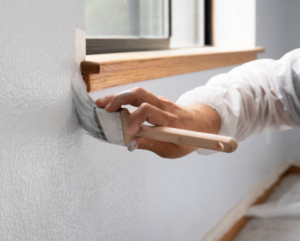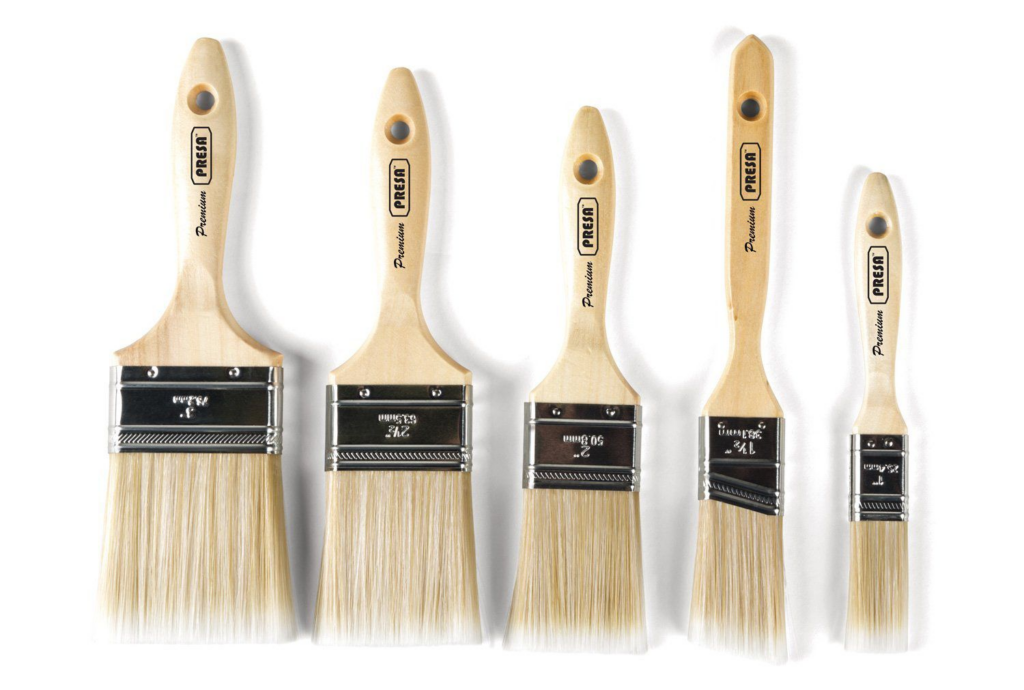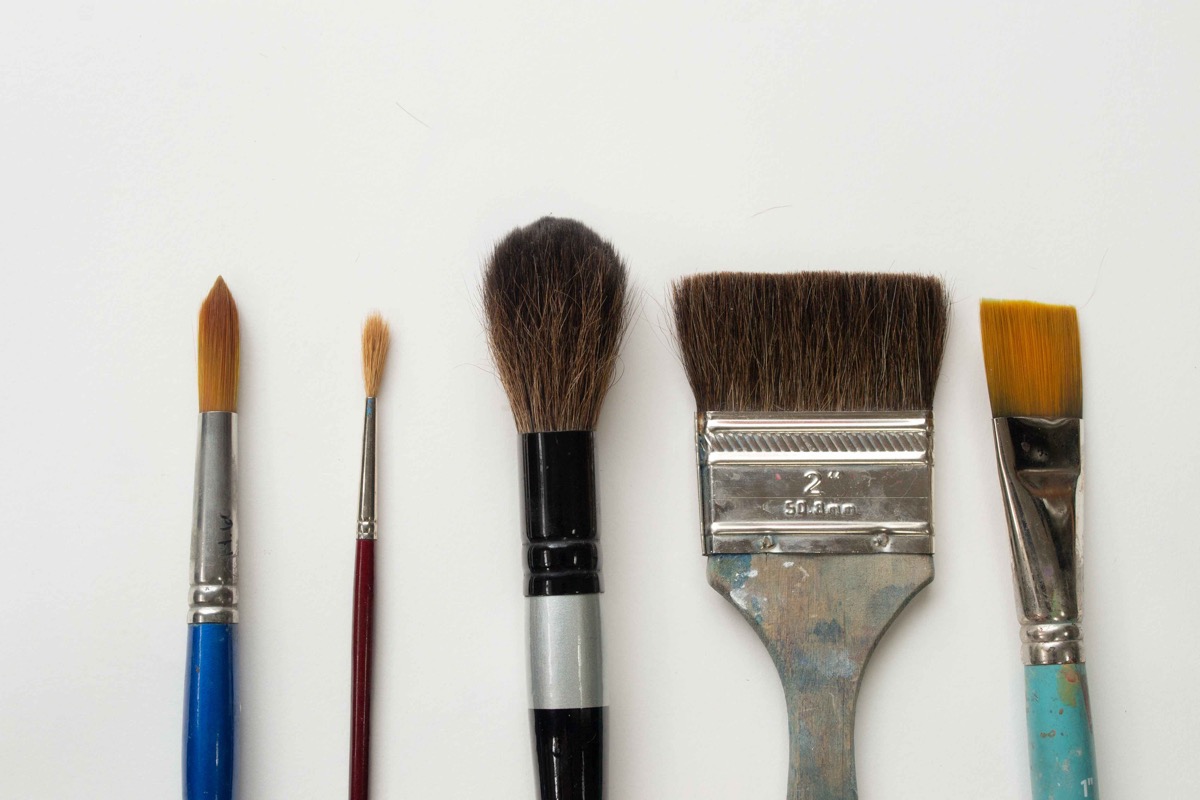Choosing the best paint brushes for walls can be challenging. These days, people tend to overlook the effectiveness of using a paintbrush because rollers and spraying machines have emerged. In the olden days, people used a paintbrush to create a stunning design still intact today. There’s one thing I want to tell you about a paintbrush. A paintbrush remains a beautiful tool in painting. From its inception, this fantastic tool has been helpful in both big and minor projects.
A controversy is going on about this unique tool. Most significantly, when one is painting a house, one decides to use best paint brushes. People might think one is not in vogue. But one thing about the paintbrush is that, no matter how creative a painter is, he cannot skip the aspect of using this tool.

Dear painter, what will you use to cover corners and edges while painting? Of course, no other materials than a paintbrush. So, I am trying to show you some uniqueness of this tool before we proceed. Now, what are the best paint brushes for walls?
However, this article gives information about the best paint brushes to make your walls look stunning. However, the brushes you’ll see here are explicitly created. Even on walls, each brush has its unique role to play. Therefore, please pay attention and shun all distractions.
Are you a painter? Do you want to know the best paintbrush you can use for walls in your new project? There’s nothing to worry about. You’ve landed in the right place. But before we proceed, it would be nice to start this write-up with the meaning of paintbrush. If you know the meaning, perhaps; you will know how essential this tool is.
What is a paintbrush?
A paintbrush is a unique tool or an instrument that enhances creative painting work. In the world of art, no one can successfully create an outstanding artwork without using a paintbrush. In the simplest form, a paintbrush is a tool or a brush for applying paint. It is an essential tool that enables users to make edits to an image. Some painters used to call it “a rod behind creativity.” If you see an artwork that captivates your heart, this tool plays a vital role in bringing out the beauty of such artwork. In other words, an artwork cannot stand without this helpful instrument. If you want to learn watercolor paintings, this tool is one of the essential instruments you will need. In short, the paintbrush is the key behind every creativity you see in watercolor paintings.

Best paintbrushes for walls
- Small paintbrushes: Small paintbrushes are tiny and subtle. Their sizes range from one inch to two and a half inches. Small paintbrushes are specially created to paint walls in tight areas. What am I saying in essence? If you want to paint walls in corners, window areas, and trim, you should consider using small paintbrushes.
- Medium size paintbrushes: This brush is used in painting doors and shelves. Also, one can use a medium-size paintbrush to paint cabinets. It is three inches in size. These unique brushes are of medium size. They perform excellently on several projects with that unique and balance size (not too big and not too small).
- Large paintbrushes: As the name implies, these unique brushes are used for large areas. If you want to paint a ceiling or walls, you need to consider using large paintbrushes. And if you want to know if you’re holding a large brush, make sure you pick brushes that range from four inches to six inches. You can read about the Top 10 paintbrushes for kids on Amazon by visiting http://brentbailer.com/top-10-paintbrushes-for-kids-on-amazon/
- Natural brushes: The natural brush has soft bristles. These unique brushes are made from animal hair. They are capable of holding more paints to cover the surface. Not only that, their ability to hold more paints enables them to create a smooth finish. If you want to work on a site with oil-based paint, choosing natural brushes for the walls will be a great choice.
- Synthetic paintbrushes: These unique brushes are made from polyester or nylon. A synthetic brush is a perfect choice when one wants to work using water-soluble paint. Since natural brushes cannot work perfectly with water-based paint, I assure you that synthetic paint brushes will do a perfect job here. Another thing about these brushes is that they can be used when one is working with acrylic latex paint.
- Angle sash paintbrushes: Angle sash paintbrushes has a short handle. It was specifically designed to fit window frames. Also, it is created to paint window sashes. It has bristles cut on a sharp slant to form clean lines. Angle sash paint brushes are often called cutting brushes. Just because it is commonly used for cutting around walls, I said earlier that it has a short handle. So, with this short handle, one will have a unique control, and its shorthand will prevent one from having fatigue in the arm. It offers excellent stability. If you want to apply paint on some tight corners behind toilets, choosing this brush will be great.

- Round sash paintbrush: This can be used for small trims like windows muntins. Also, around sash paintbrush works well when one needs extra control over one’s paint. They can range from twenty to forty-four millimeters in size. These unique brushes are generally used for faux finishes and other decorative paintings.
- Square cut paintbrushes: Initially, these unique brushes are mainly created for walls. Countless professional painters cannot stop using this brush because its bristle is square cut. That square cut makes it a smooth tool for flat surfaces like interior and exterior walls. One can also use this tool to paint flat doors. Trust me; this tool is more precise than a roller. You can read about What are the Advantages and Disadvantages of Using Acrylic paints? by clicking here.
On a final note
Dear reader, hopefully, you have found something instructive here. If so, please kindly share the link to this page with families and friends that you know it will benefit. Finally, a question might cross your mind while reading this article. Please kindly drop your question in the comment box.
